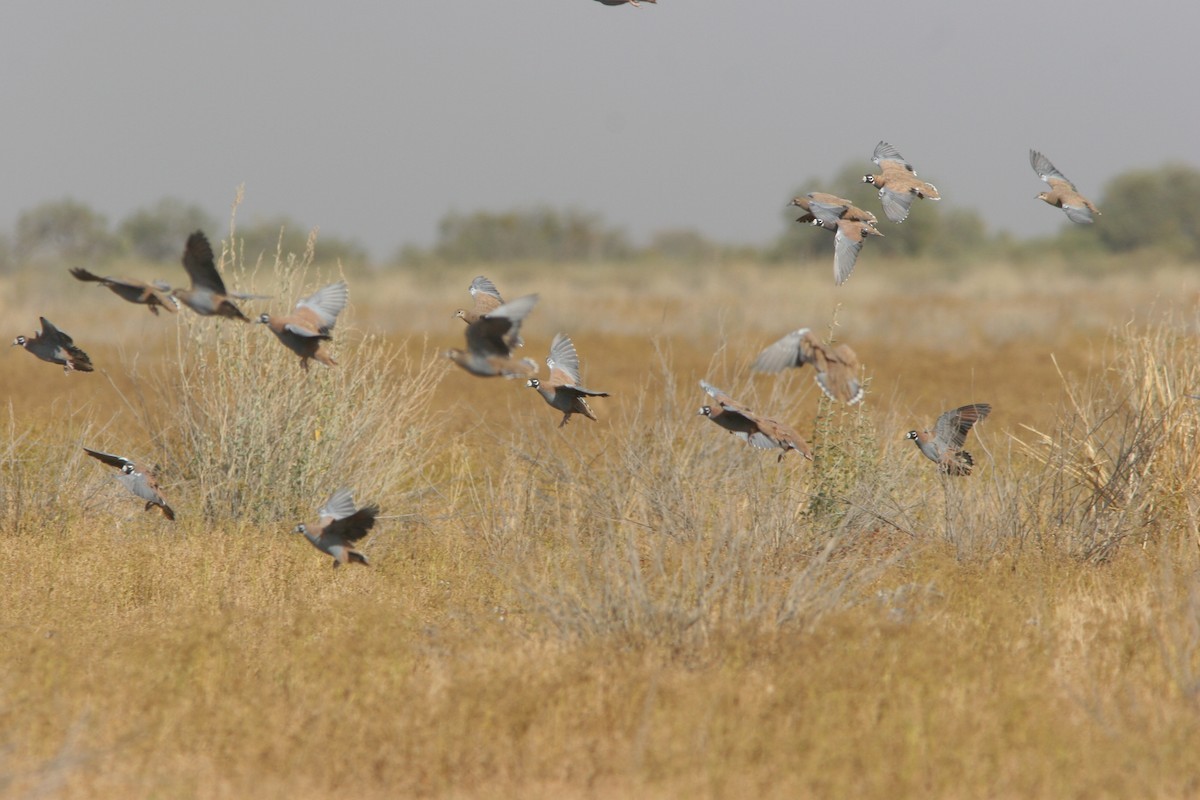Flock Bronzewing
A species of Australian Bronzewings Scientific name : Phaps histrionica Genus : Australian Bronzewings
Flock Bronzewing, A species of Australian Bronzewings
Botanical name: Phaps histrionica
Genus: Australian Bronzewings
Content
Description General Info
 Photo By Don Roberson
Photo By Don Roberson Description
The flock bronzewing is the most nomadic of the Australian pigeons, and it is difficult to mistake for other Australian species. Fully grown flock bronzewings can range in length from 280–305 mm with a wingspan of 189–216 mm. Its weight can range from 260–320 grams. 
Size
31 cm
Nest Placement
Tree
Feeding Habits
Flock Bronzewing primarily dines on seeds from various grasses, herbs, and shrubs, supplementing its diet occasionally with green shoots. Unique to flock Bronzewing is the ability to utilize undigested seeds from cattle dung, a diet adaptation facilitated by livestock farming in Australia.
Habitat
Flock Bronzewing primarily inhabits arid grasslands with tussock-forming grasses and shrubs interspersed with open areas. These birds are adapted to regions that receive annual rainfall ranging from 200 to 500 mm, where a diverse ephemeral community of plants flourishes after wet periods. Their habitat can extend to saltbush or bluebush plains, Triodia-dominated spinifex grasslands, some agricultural landscapes including dry rice fields and sorghum stubble, and areas along roadsides, predominantly within expansive, arid plains such as those found on the Barkly Tableland.
Dite type
Herbivorous
General Info
Feeding Habits
Bird food type
Distribution Area
The flock bronzewing is most abundant within the Barkly Tablelands of eastern Northern Territory and Western Queensland; however, their range is quite large and they will occasionally be found in the Kimberly region of Western Australia, northern South Australia and northwestern New South Wales. They are no longer found in the type locality on the Liverpool Plains, NSW. 
Species Status
The main impact on flock bronzewings has been through pastoralism. In the mid- to late 1800s, many observers wrote about the enormous flocks of the flock pigeons within areas where they are now just occasional visitors such as northern South Australia and western New South Wales. Pastoralism has affected both populations and range as stock feed on the grasses that the flock bronzewings require for food and nesting sites. Another threat to the flock bronzewing is through predation; they are vulnerable to predation as they lay their eggs on the ground. 

 Photo By Don Roberson
Photo By Don Roberson Scientific Classification
Phylum
Chordates Class
Birds Order
Pigeons and doves Family
Dove Genus
Australian Bronzewings Species
Flock Bronzewing